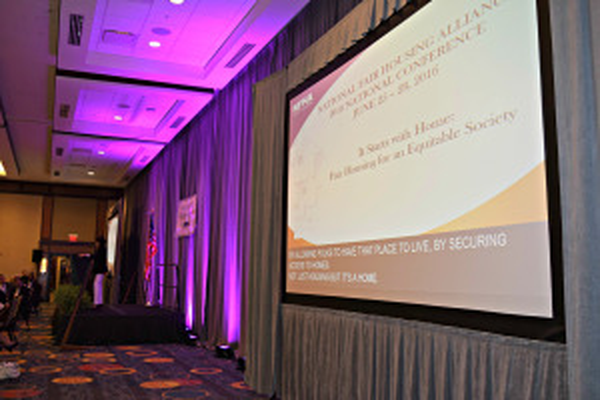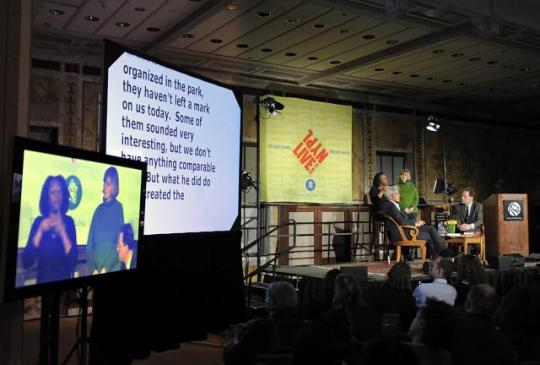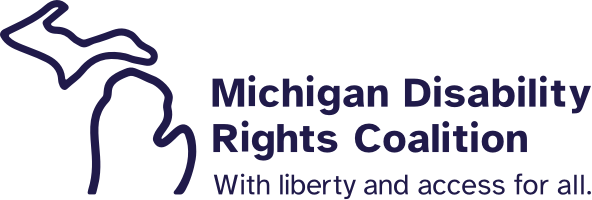The Marriage of Captions and Sounds
Tuesday, July 28, 2020


Captions Are Useful Everywhere
With a little practice, you can increase your enjoyment of videos, slides, and movies by playing available captions along with the sound track of the media.
I have personally learned the value of combining these tools of accessibility over a period of decades.
My first taste of the possibilities of combining captions and sounds was in the mid-’90s when I staffed the Michigan Rehabilitation Council. We experimented with combining real-time captioning and video conferencing for a single MRC meeting using Michigan’s network of university-based video-conferencing systems to allow people statewide to see the MRC meeting and follow the meeting discussion. We had already been using the video-conferencing network as an ongoing experiment for a year at the time, and felt that adding real-time captioning would be a powerful step to make the MRC meetings more broadly accessible to Michigan’s statewide disability community.
Expanding the universal accessibility of our meetings this way was not routine in the mid-90s. There were a number of different standards for video-conferencing at the time, and universities chose them more or less at random. All the choices needed a significant investment in equipment, software, storage, and technical expertise. The variety of possibilities meant that we had to hire a technical expert whose sole job was to “bridge” the different video systems in real-time to assure that everyone who wanted to could participate in the meeting.

Multiple Ways to Provide Accessible Content
Real-time captions were much more unique then than now. No third party captions from the other side of the world. We hired a stenographer, and had the stenographer and the site Audio-Visual people work together so that the captions would show up throughout the statewide video-conferencing system and on a screen that was located in the actual meeting.
The experiment went well. I had the opportunity to simply observe the 70-80 attendees at the MRC meeting site as they went about their personal engagement with the content. I also paid attention to my own response, and discovered (to my surprise) that I preferred reading the captions on the screen to listening to the conversation. When I looked around, it seemed to me that about one-third of the participants in the room were also looking at the captions on the screen rather than simply listening to the Council. Since only a handful of the participants were deaf or hard of hearing, this meant that there were a lot of people who found it easier to engage the content through print in the real-time captioning rather than listening to the voices of the speakers.
My next smaller epiphany was to always turn on the captions in Youtube videos if they were available. This allowed me to do little bits of work and note taking without losing the thread of the content.
My final epiphany occurred when our family streaming content became genuinely usable through a dramatic upgrade in bandwidth from our internet service.
We began to watch video with subtitles, and also video that contained strong accents like those in some British, Scottish, and Welsh mystery shows. The Welsh ones were particularly interesting because apparently the Welsh use communication in an on-the-fly combination of British English and Welsh. Also, the captions point out background noises (birds chirping, dogs barking, water burbling, etc.) which can affect the behavior of the actors or alter the story line, but which, frankly, I just didn’t hear. Also, the pairing of the captions and the voices helped over time to improve our ability to discriminate the accents accurately.

Our Seven Tools for Accessing Our World
Our disability community has always understood that universal access would make content more widely available to people with disabilities. But I think it is also true that universal accessibility will make content more accessible for all people. The most obvious day-to-day example of this is the way community members use curb cuts for strollers, dolleys, wagons, scooters, and other ways of getting around.
Try combining captions and sounds. You may find many improvements in the enjoyment of content for yourself, you family, and your friends.

